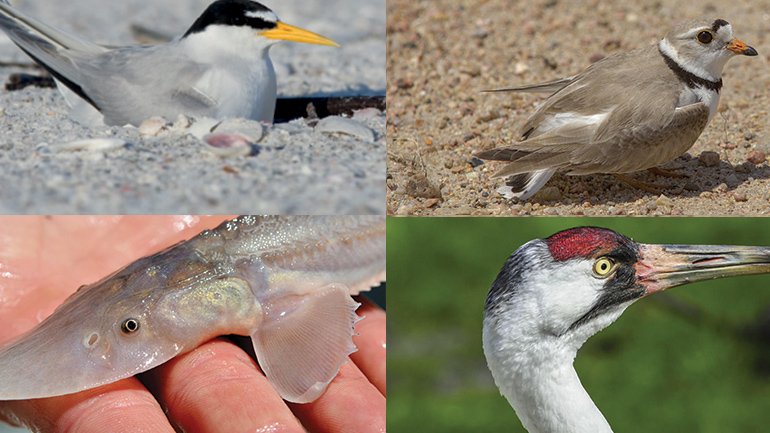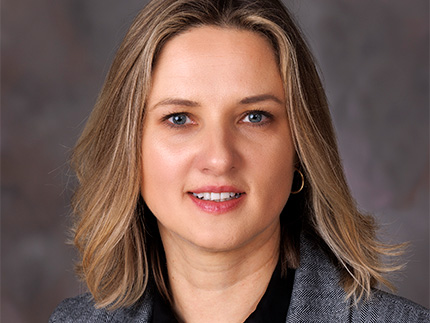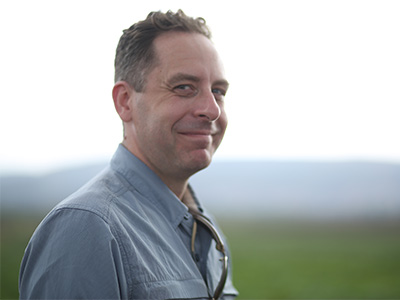Early in April 2021, the Daugherty Water for Food Global Institute (DWFI) hosted a virtual event with speakers from the Platte River Recovery Implementation Program (PRRIP). PRRIP includes stakeholders from Nebraska, Colorado, and Wyoming and is one of the most successful large-scale endangered species programs in the United States.
During the event, Jason Farnsworth, PRRIP’s executive director, and George Oamek, an economist at PRRIP, highlighted the unusual governance structure of the program and spoke about the various engineering and economic approaches they’ve implemented. They also shared their learning on using incentives with agricultural producers and other water stakeholders around endangered species management.

From the DWFI side, the event offered us an opportunity to blend synchronous and asynchronous content and to experiment with audience engagement (we’re all feeling the effects of Zoom fatigue!). We also wanted to cater to a variety of attendee backgrounds in one session that covered an extremely complex topic.
As well as interacting with the speakers, attendees were able to tailor content to their own interests. We recorded and edited a mixture of introductory and deep-dive videos with our speakers, allowing attendees to choose to watch 4 out of 6 available mini videos during the event.
The short videos covered topics including an evaluation of engineering projects, experiences in leasing water from individual irrigators and from larger water providers and overall lessons learned. All of the content covered in the event, including the question and answer session, is available below within this blog.
The feedback we received during the event was extremely positive and we’ll certainly continue to iterate and experiment in future events to engage and serve our audiences. We hope that you also enjoy the way the content is laid out within this blog. Again, our goal is to make it more accessible and engaging. Let us know what you think! We’re genuinely curious to hear from you.

The introductory video explains the fundamental structural difference between the Platte River recovery program and other recovery programs. Usually, such programs are implemented by a federal agency like the Bureau of Reclamation. PRRIP is managed on a consensus basis by various stakeholders representing Nebraska, Colorado, and Wyoming interests. Watch the video below to hear Jason Farnsworth explain these differences in more detail and talk about what motivated the program to start in 2007, as well as what action plans they have in place to achieve their program’s goals.
PRRIP started targeting their water goals using engineering projects. George Oamek provides an overview of their experiences around engineering approaches to meet program goals (3-minute video). Watch it to learn what these projects helped to achieve as well as what the program managers learned about the associated costs.
PRRIP’s economic incentive-based projects started with water leases from larger water providers. Watch a 2-minute video below where George explains what motivated this approach. This includes the local management of both groundwater and surface water use. George also talks about the costs of this approach and how storage water could be used as insurance.
Another economic incentive-based strategy involves PRRIP’s water leases with individual local crop producers. George discusses their pilot leasing program and how it’s evolved since 2016. Watch a 3-minute video to learn about project participants, lease price offers, and the key component of the strategy –relationship building.
One of key challenges in creating an effective water leasing program for PRRIP is dealing with crop price volatility. Crop prices can influence participation in water lease programs, as well as the price that producers would accept for leasing their water. George talks about the lessons learned related to crop price volatility in a 1-minute segment below.
Another key lesson from PRRIP’s water leasing program relates to initial assumptions about water acquisition costs. In a 2-minute video George discusses what was learned about the value of water to irrigators and how that’s informed PRRIP’s leasing strategy.
Many Western water managers are familiar with the concepts of ‘paper water’ and ‘storage water’. To learn what this distinction means to PRRIP’s water goals, watch a 2-minute segment where George explains the significance of having storage in Lake McConaughy.
The question-and-answer session below records Jason’s and George’s answers to questions about strategy changes from engineering to incentive-based projects, economic impacts of the program, the program’s adaptability to climate change, the duration of leases with irrigators, the potential use of price indices, and more!
If you have any comments or would like to engage with us in the future events, contact Renata Rimsaite at rrimsaite@unl.edu



